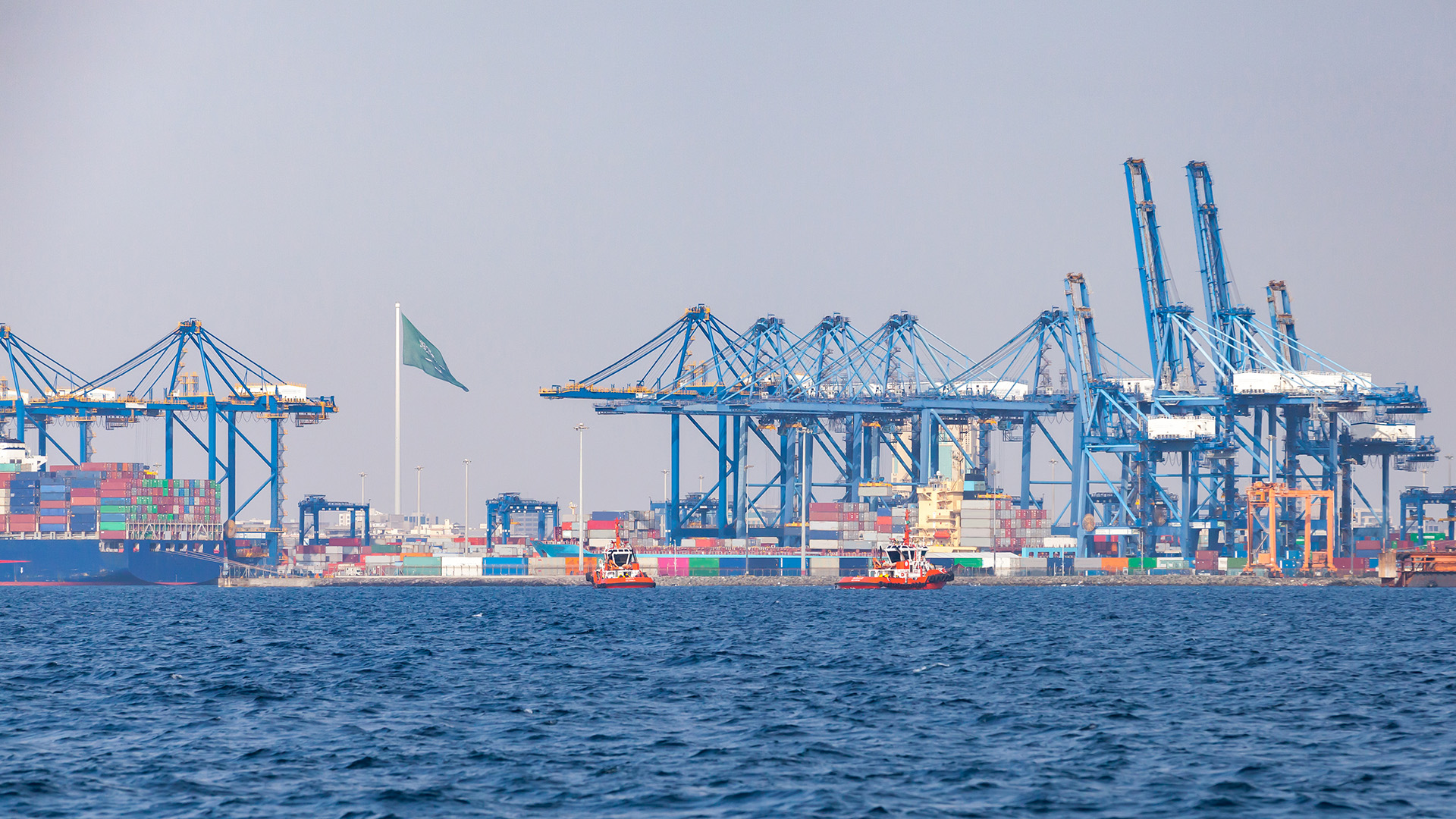
In fall 2023, Iran-backed Houthi rebels from Yemen began attacking commercial ships in the Red Sea — one of the world’s most vital arteries for trade. Linking the Indian Ocean to the Suez Canal and the Mediterranean, this narrow stretch moves billions in global trade between Asia, Europe, and beyond.
Since then, the Red Sea has become a dangerous and unpredictable stretch for commercial shipping. Attacks around the Bab el-Mandeb Strait, which connects the Red Sea and Gulf of Aden, pushed many major carriers to reroute their ships all the way around Africa’s Cape of Good Hope. This detour added thousands of miles to journeys that previously flowed steadily through the Red Sea, while triggering a sharp decline in port activity in Saudi Arabia’s western ports. And the threat hasn’t let up — Houthi attacks have continued into mid-2025, with the latest reported strike as recent as July.
As a result, ports like Jeddah Islamic Port and King Abdullah Port — once buzzing hubs for container traffic and transshipment — have seen their volumes shrink drastically: Jeddah experienced a steep fall in vessel calls and cargo volumes, while King Abdullah's throughput dropped by over 80% in 2024.
Some smaller and regional carriers have tried to fill the gap with feeder services, keeping a trickle of trade moving through the Red Sea. But ultra-large container ships have mostly stayed away, keeping the region’s shipping footprint — and associated emissions — far below what they once were. Even recent attempts by carriers like CMA CGM to resume Red Sea sailings have been hampered by rising tensions and fresh conflicts.
Below, OceanMind's monthly analysis charts the impact of these disruptions on both shipping activity and emissions. Using AIS devices and vessel characteristics like size and engine specifications, this approach tracks maritime patterns worldwide — including in the Red Sea region. Read on for a closer look at activity in the Red Sea versus the Persian Gulf, followed by a deep dive on port analytics at Jeddah and King Abdullah.
Overall, OceanMind's data present a clear picture of regional disruption.
Saudi Arabia’s Red Sea ports experienced a steep drop in vessel activity, reflecting the impact of rerouting around the Cape of Good Hope. Activity here declined from more than 1.1 million nautical miles in 2023 to around 600,000 throughout 2024 and into 2025 — a roughly 45% decrease.
Meanwhile, the Persian Gulf — anchored by Saudi Arabia's busy port of Dammam — shows stable activity levels, unaffected by the Red Sea disruptions.
The emissions data tell a similar story. The Red Sea saw emissions drop even more dramatically than activity, falling from more than 500,000 to less than 200,000 tonnes CO2e 100yr — a roughly 60% reduction as fewer large vessels transit the waterway.
(Note: The data in this article are based on Climate TRACE release 4.4.0 from late June 2025, which includes international shipping data contributed by OceanMind. To determine port activity and emissions for trips between two ports, OceanMind tracks the movement of vessels, then assigns the nautical miles travelled and corresponding emissions split across the origin and destination ports. Estimated emissions while the vessel is staying in a port are all assigned to the respective port.)
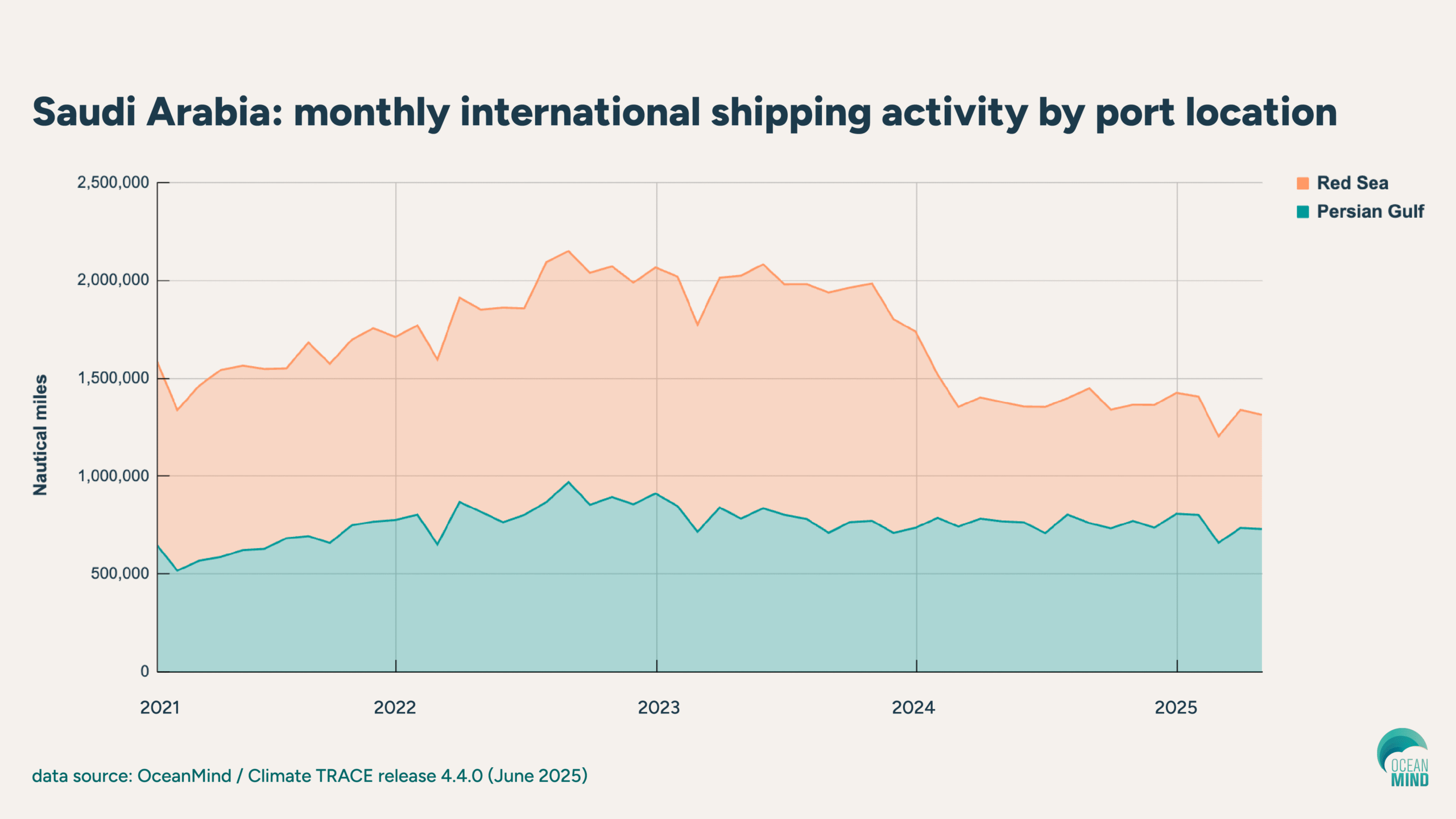
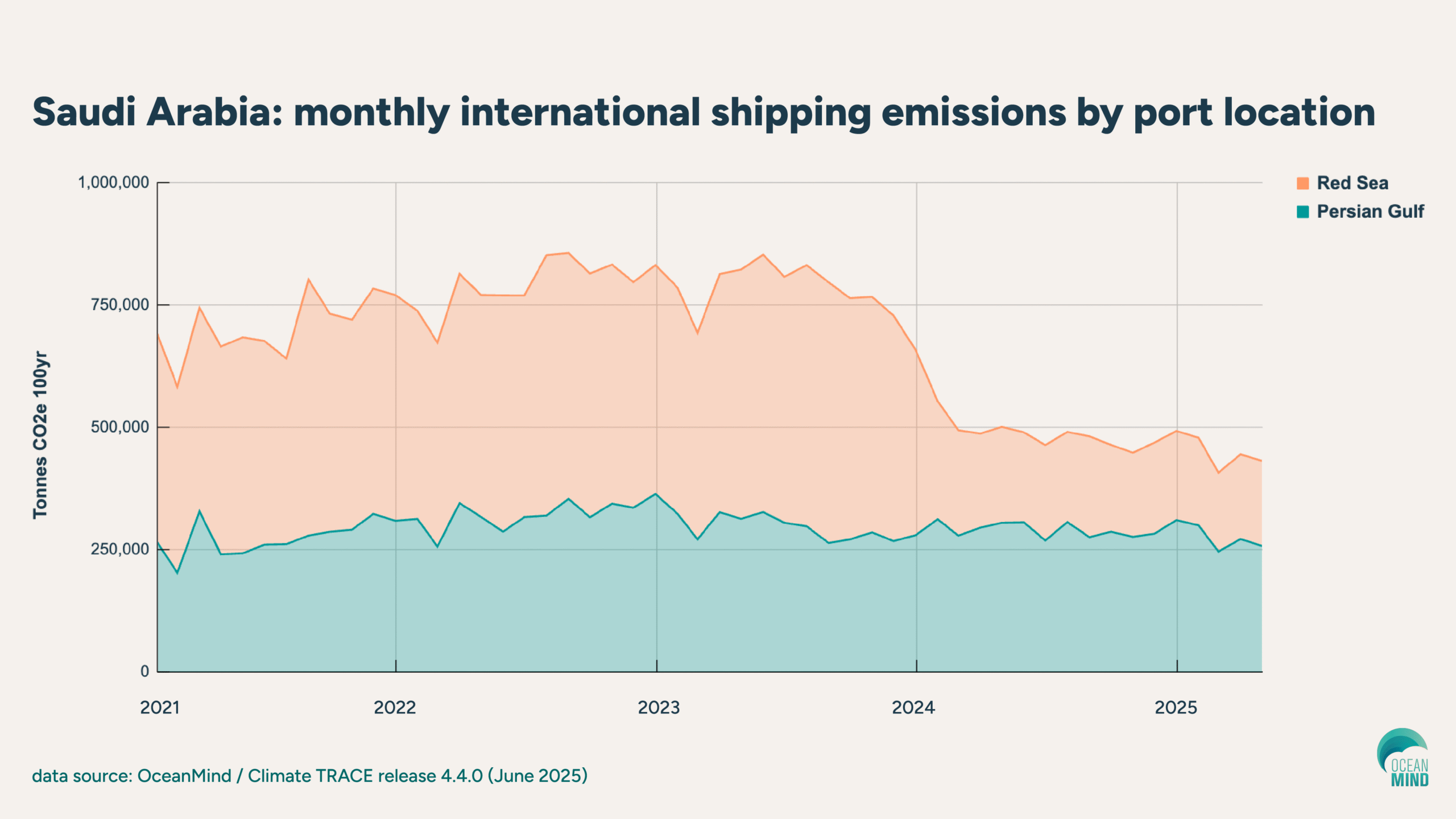
Jeddah, Saudi Arabia's largest container port on the Red Sea, shows a sustained drop in monthly activity from early 2023 levels to significantly lower volumes through 2024 and into 2025. The downturn aligns with major carriers rerouting away from the Red Sea amid escalating security risks.
The emissions data for Jeddah follow the same pattern, with reduced ship traffic translating directly into lower shipping emissions assigned to the port. The data illustrate how closely port-level emissions track with vessel activity levels.
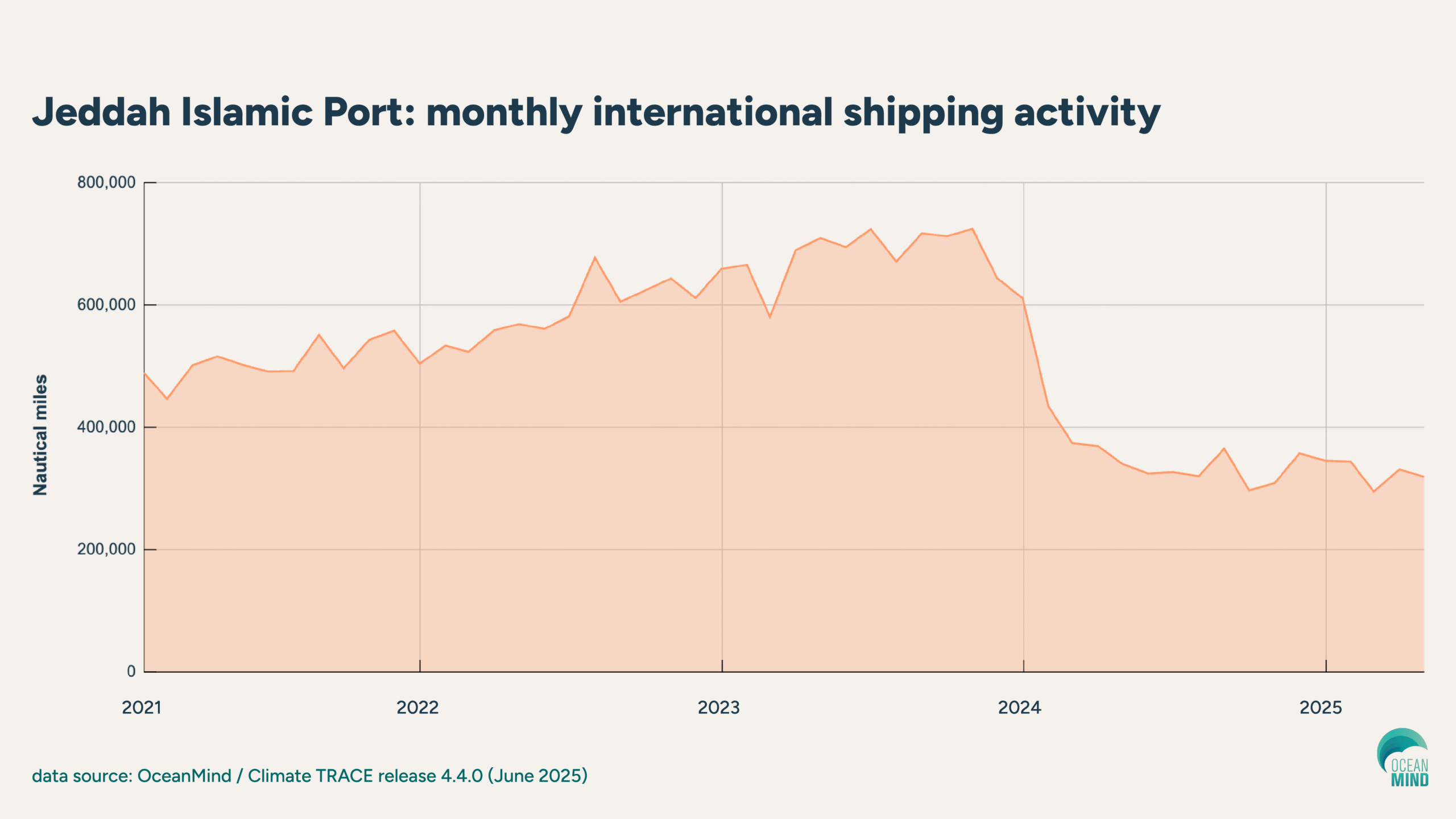
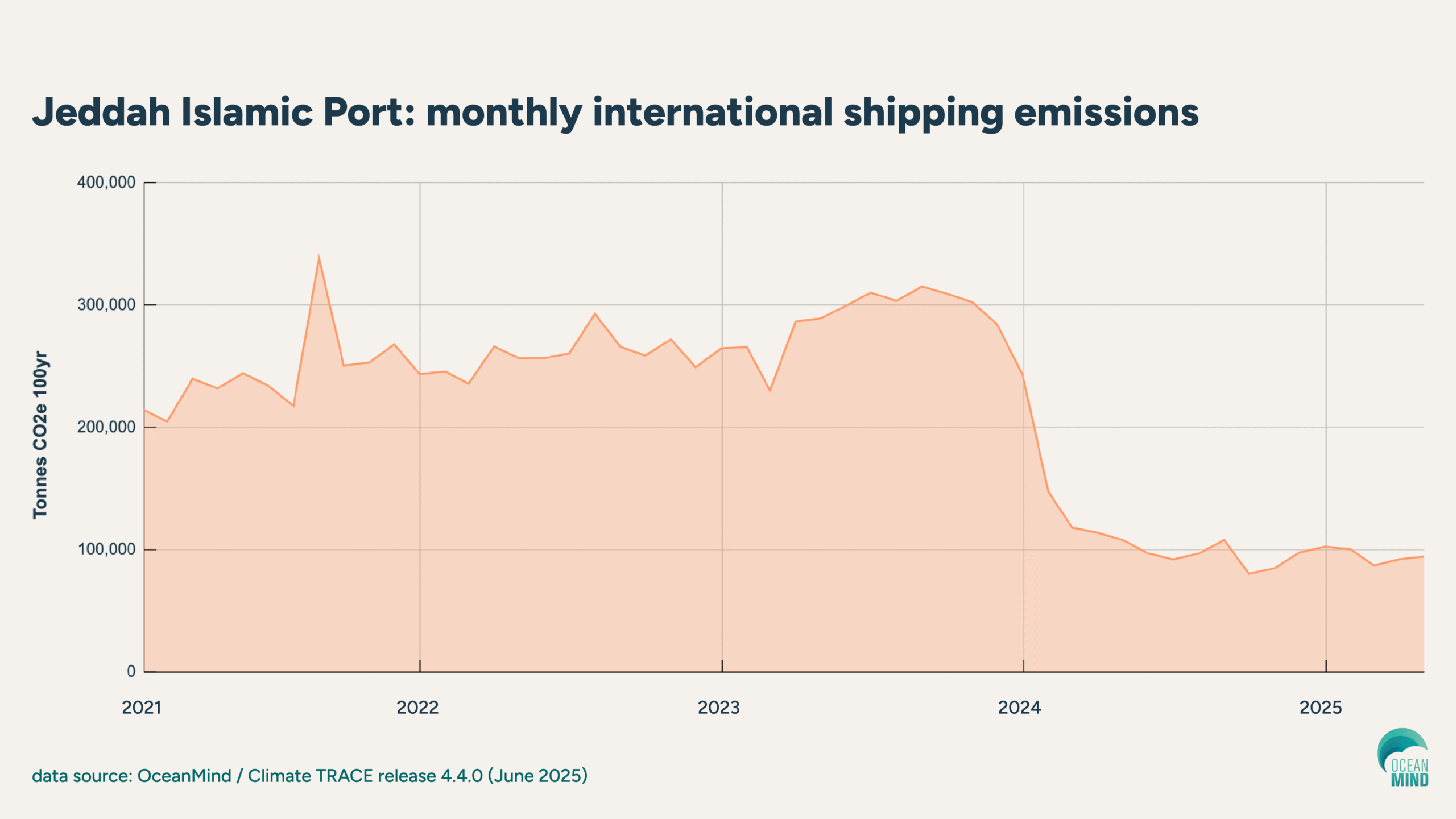
King Abdullah Port, previously one of the fastest-growing container terminals globally, shows an even steeper drop in vessel activity. Monthly activity levels have plunged dramatically, reflecting the near-total halt of deep-sea services since early 2024.
Correspondingly, emissions linked to shipping at King Abdullah Port have plummeted.
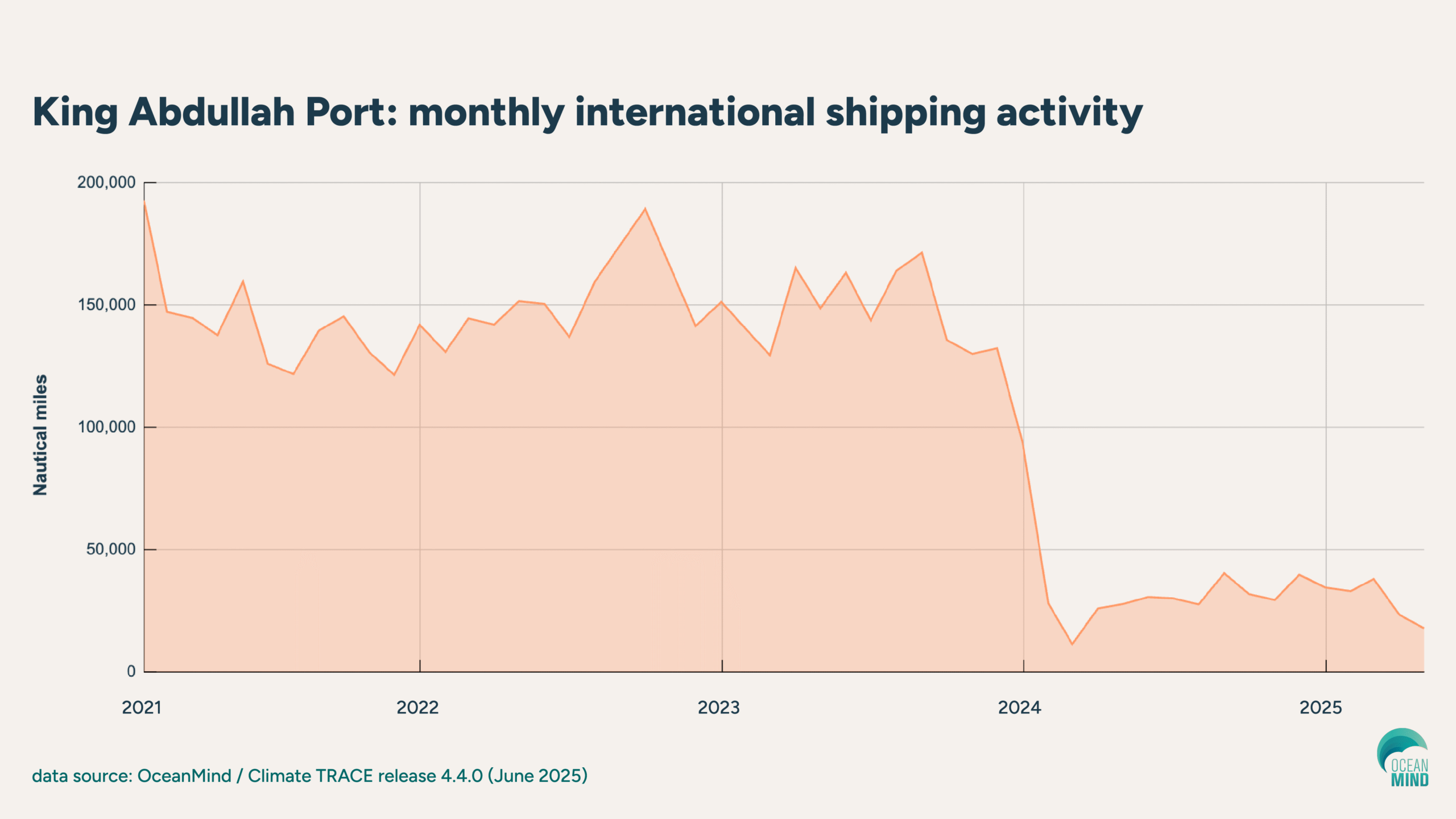
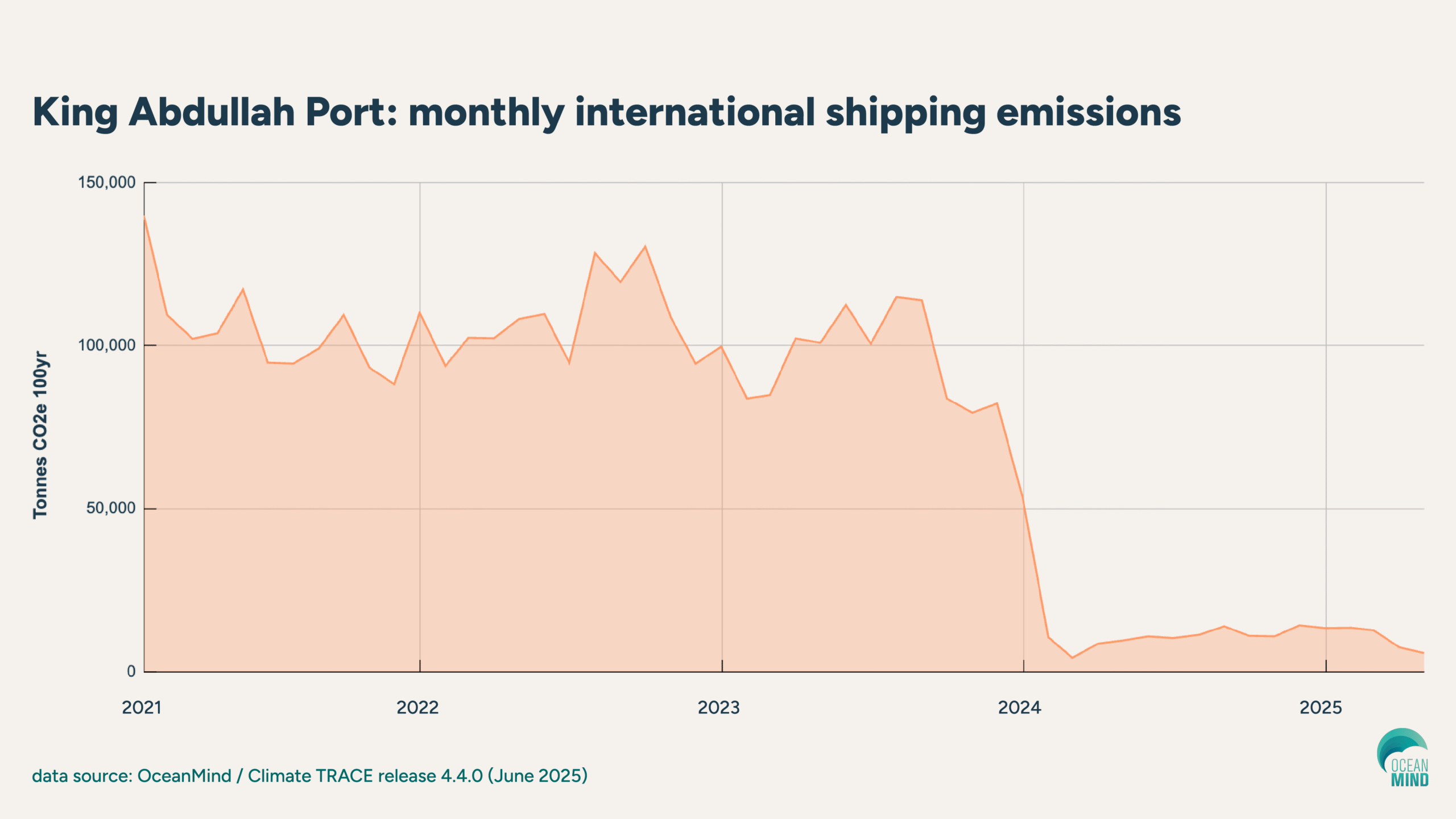
These snapshots reveal how deeply the Red Sea crisis has reshaped maritime traffic patterns across the region. Monthly, granular data like these — made freely available as part of OceanMind's role in Climate TRACE — transform how we understand and respond to global shipping disruptions.
This kind of insight helps industry leaders and policymakers anticipate risks more clearly and adapt strategies to meet the realities of a shifting maritime landscape.
hero image: Jeddah Islamic Port, Saudi Arabia (iStock / eugenesergeev)